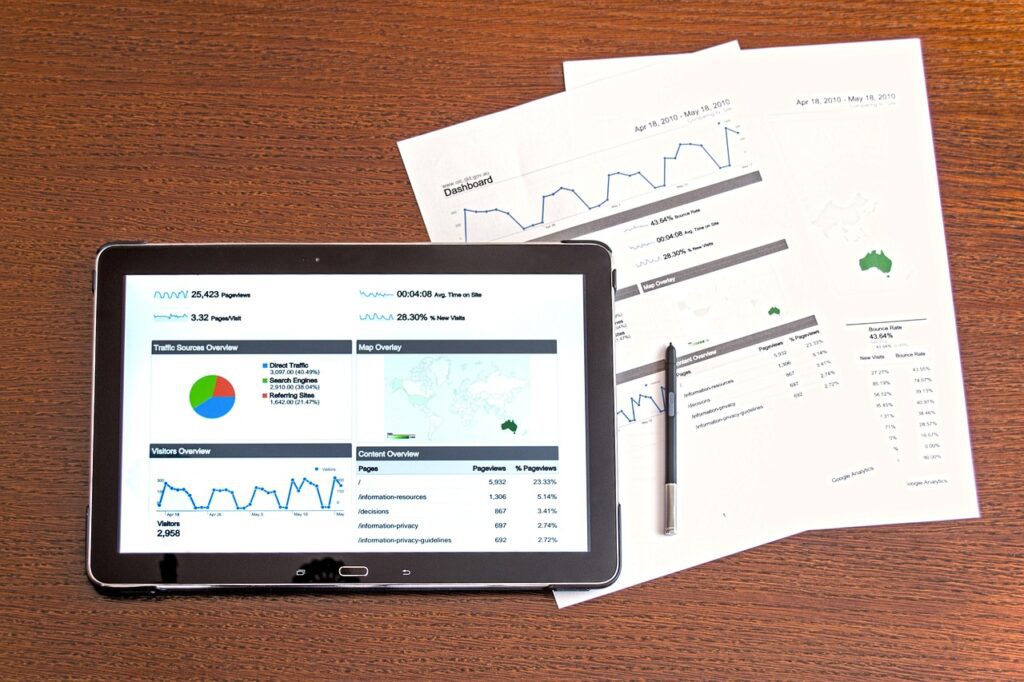Education Hub.
OCTOBER 2, 2024
Building a perfectly balanced portfolio
Diversification is the key ingredient to portfolio construction

What should I buy? Which sectors? Which regions? Small or large companies?
First up, it’s really important to understand how your investments interact with each other within your portfolio.
First up, it’s really important to understand how your investments interact with each other within your portfolio.
Introducing correlation
A key concept worth understanding is correlation: a mathematical description of how linked two things are. If, say, the price of kale always moves up and down in exactly the same way as the price of kombucha then the two things are 100% correlated. If the two prices never move in the same way then they’re 0% correlated.
The moment you own more than one investment you’re building a portfolio (whether you know it or not). And you now have to consider not just the potential returns of each thing you’re buying but also how those returns may be linked.
Mathematics shows that the value of a portfolio containing several investments that move in uncorrelated ways will jump about less. In practice finding investments that are truly uncorrelated is hard, but if you manage it you should suffer from fewer and shallower drops in the value of your portfolio – and hence fewer sleepless nights.
If you want to put this in more intuitive but less mathematically rigorous terms: don’t put all your eggs in one basket. Or, if you prefer, you can think of a balanced portfolio as meaning that any losses in one investment should be offset by gains in others.
Let’s get practical for a moment. Imagine you own $1,000 of Apple stock. If you’re suddenly given another $1,000 and you use it to buy shares in that other giant smartphone manufacturer, Samsung, you won’t have added much diversity to your portfolio. It’s likely that both companies’ stocks will move in reaction to the same sorts of triggers – like the cost of silicon chips or the willingness of US consumers to spend money. But if you use that extra capital to buy, say, a French water company’s shares or Canadian government bonds you’ll probably have diversified quite a bit.
Correlation is a big reason why wealthy investors will pay such high fees to skilled portfolio managers. They’re not necessarily looking for massive returns from these managers, they’re looking for returns that are uncorrelated from where they’re likely to have plenty of money invested.
So, to sum up, building a so-called diversified or balanced portfolio minimizes your risk of losses compared to potential returns.
So, to sum up, building a so-called diversified or balanced portfolio minimizes your risk of losses compared to potential returns.
How to spread your investments
There are a whole range of assets that you can put in your investment basket. The most famous are stocks, or equities: shares of the ownership of a company.
You’ve also got bonds – the debt of a government or company – foreign currencies, commodities (things like gold or oil) and even real estate like your house or an office building.
Different forces drive the prices of these assets which is a good thing for investors.
For example, stocks are closely linked to company profits, so they tend to gain when the economy is rosy, people are spending freely, and corporations are making money. Stocks in the US – the world’s biggest market – have returned an average of about 9% a year over the past century. But those returns are far from steady: in 2013 the US stock market surged 32% but in 2008 it tumbled 37%.
Bonds, meanwhile, pay a fixed return, so they do well in periods of low inflation (higher inflation erodes the value of their fixed payments) – and bonds of wealthy governments – like the US or Germany – are a favorite of investors in periods of risk, because they’re much safer than stocks.
US government bonds have returned an average of 5-6% a year over the past century.
Then there’s gold. Unlike bonds, gold usually climbs when inflation spikes, because it’s considered a physical, fixed store of value. When inflation causes investors lose faith in the value of traditional currencies like the dollar or the euro they’ll head to the safety of the gold stuff.
There’s no one definitive way to spread your investments across these assets: it’s always going to be a trade-off between potential gains and potential losses.
But to give you some ideas and inspiration, let’s compare a few portfolios recommended by notable investors:
First off, an investment advisor named Harry Browne devised what he called the “permanent portfolio”. This splits your pot into four and allocates an equal amount to stocks, long-dated US government bonds, gold, and cash. This fairly conservative strategy aims to provide reasonable gains no matter what the economy is doing. A study assessing the strategy over the 40 years through 2013 found that it gained almost 9% a year.
Next up, let’s look at a portfolio created by William Bernstein. This also splits capital into four equal pots, but consists of 25% big US stocks, 25% smaller US stocks, 25% non-US stocks, and 25% bonds. This is a more aggressive approach – its bigger reliance on shares gives it greater potential for both gains and losses. It grew by an average of 10.5% a year over the 40 years through 2013. On the face of it, Bernstein’s portfolio has done better than Browne’s – which only gained 9%.
However, at one point Bernstein’s selection fell a shocking 43% – which would have felt very painful. The worst peak-to-trough drop for Browne’s “permanent portfolio” was just 13%. Much less traumatic.
There are basically limitless ways you can tinker splitting your money across different investments. To give you another example, the managers of the giant endowment funds of the top American universities – Harvard, Stanford, and Yale – have given their assets roughly this split on average: 35% US stocks, 28% bonds, 15% non-US stocks, 11% commodities, and 11% real estate.
To be sure, some people think all this tinkering is unnecessary. Famed investor Warren Buffett has reportedly kept things simple when it comes to the advice given to those overseeing a trust set up for his wife in his will: invest 90% of the money in big US stocks and 10% in short-term US government bonds.
The best approach for you depends on your risk tolerance – which itself will depend on how long you want to keep investing your money.
This part is key, and something that we at Vantage Capital spends a lot of time discussing with our clients.
How to measure your investment success
Nowadays, most investments can be tracked easily online via your brokerage account or whatever other portal you choose. So you can check in anytime and see whether you’re up or down compared to when you first put your money in.
Obviously, you’d rather your pot went up rather than down, but if you look and find your capital is worth 5% more than the last time you checked how do you know if that’s really a healthy performance or if it should be up even more?
Just like with a ’70s gameshow, it’s good to check out what you could have gained. In practice that means you should (almost always) compare the return on your investments to what you could have got if you’d just kept the money in an asset with, theoretically, zero risk of losing your original stake.
Professional investors call this the “risk-free rate” – and generally use US Treasury bonds as a benchmark, as the American government’s not (yet) failed to honor its debts.
Out of curiosity, you might also want to compare your portfolio’s performance with a broad measure of the stock market (the MSCI World Index is a good proxy of global stocks in developed countries, for example). But keep in mind that, unless your portfolio is entirely in equities, it’s likely to rise at a slower pace than the stock market during good times – but also fall less when the economy is worse for stocks.
As you’ve probably gathered by now, the heart of investing is balancing returns with risk. Imagine you lent some capital to a friend to invest for you. A week later he comes back with five times as much. You’re impressed, so you ask how he did it. “I put it all on a horse at the racetrack and it came in at 5-1 odds,” he replies. Still impressed? The point is that it’s easier to make big gains if you’re taking big risks.
So professional investors – who hope to be investing for years to come and have reputations to uphold – obsess over their risk-adjusted returns. One commonly highlighted measure is the Sharpe ratio, which is basically returns divided by volatility (and corrected for the risk-free rate).
Tools to get started setting up your portfolio
There are a few routes available if you want to take the plunge and start building an investment portfolio – and, as always, there are trade-offs involved.
The main tradeoff is between convenience and fees. If you go it alone and select your own investments, you won’t have to pay a management fee – but you’ll also have to dedicate more of your own time. Because asset prices move over time, even long-term investors periodically take stock and examine the performance of their portfolio parts – often in order to rebalance back to the original allocation of assets they decided worked for them.
Some investors prefer the comfort of working with a wealth manager (such as Vantage Capital) on their investments. These typically take a fee in return, but provides investors with a high level of comfort, and often a broad network of reputable banks to keep client’s money safe.
That’s it for our piece on portfolio construction, and just as a reminder on the key points:
- Correlation is king. Splitting your money across assets that move independently will boost your risk-adjusted returns.
- There are lots of different ways to split your investments – some conservative, some more aggressive.
- When measuring how well your investments have performed, you should make sure you check the returns compared with the risk-free rate of return.
- You can work with an advisor to build and rebalance your portfolio periodically in return for a small fee.






